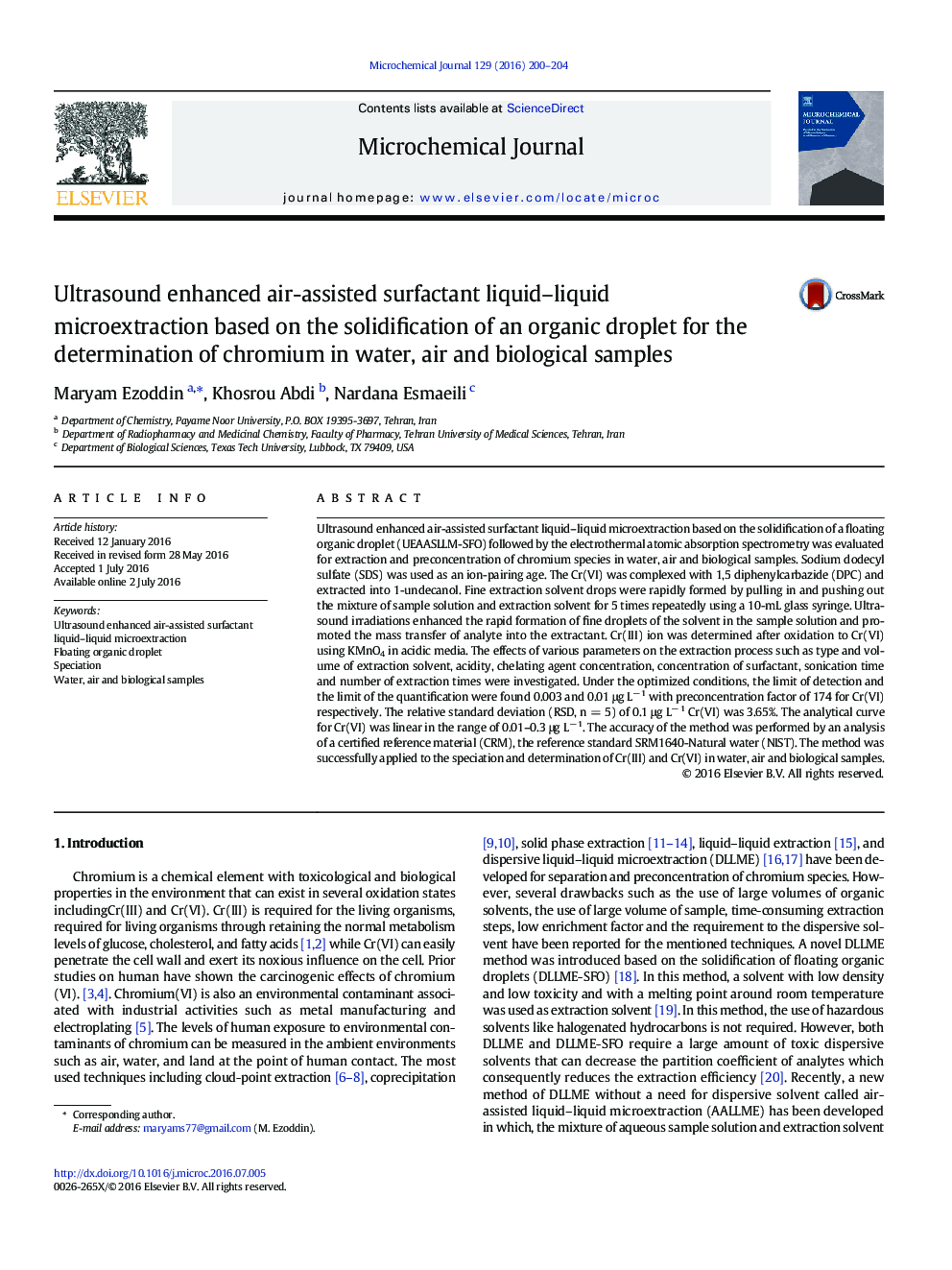| Article ID | Journal | Published Year | Pages | File Type |
|---|---|---|---|---|
| 1227608 | Microchemical Journal | 2016 | 5 Pages |
•A novel UEAASLLM-SFO method was evaluated for the preconcentration of chromium species.•An extraction solvent with low density was used.•SDS was used as an ion pair to convert cationic complex to hydrophobic complex.•Fine extraction solvent drops were rapidly formed into the sample by AALLME.•Ultrasound increased the analyte mass transfer into extractant.
Ultrasound enhanced air-assisted surfactant liquid–liquid microextraction based on the solidification of a floating organic droplet (UEAASLLM-SFO) followed by the electrothermal atomic absorption spectrometry was evaluated for extraction and preconcentration of chromium species in water, air and biological samples. Sodium dodecyl sulfate (SDS) was used as an ion-pairing age. The Cr(VI) was complexed with 1,5 diphenylcarbazide (DPC) and extracted into 1-undecanol. Fine extraction solvent drops were rapidly formed by pulling in and pushing out the mixture of sample solution and extraction solvent for 5 times repeatedly using a 10-mL glass syringe. Ultrasound irradiations enhanced the rapid formation of fine droplets of the solvent in the sample solution and promoted the mass transfer of analyte into the extractant. Cr(III) ion was determined after oxidation to Cr(VI) using KMnO4 in acidic media. The effects of various parameters on the extraction process such as type and volume of extraction solvent, acidity, chelating agent concentration, concentration of surfactant, sonication time and number of extraction times were investigated. Under the optimized conditions, the limit of detection and the limit of the quantification were found 0.003 and 0.01 μg L− 1 with preconcentration factor of 174 for Cr(VI) respectively. The relative standard deviation (RSD, n = 5) of 0.1 μg L− 1 Cr(VI) was 3.65%. The analytical curve for Cr(VI) was linear in the range of 0.01–0.3 μg L− 1. The accuracy of the method was performed by an analysis of a certified reference material (CRM), the reference standard SRM1640-Natural water (NIST). The method was successfully applied to the speciation and determination of Cr(III) and Cr(VI) in water, air and biological samples.
